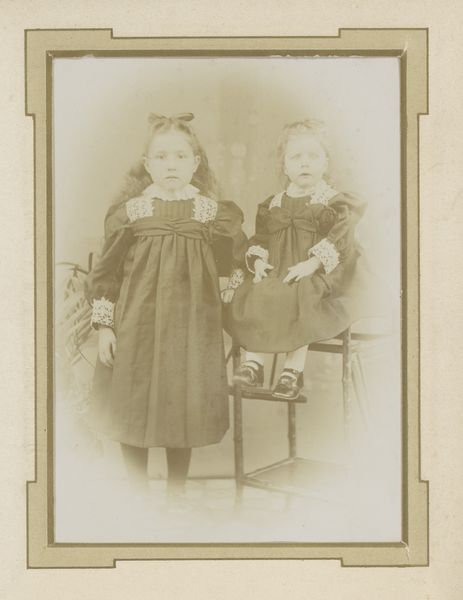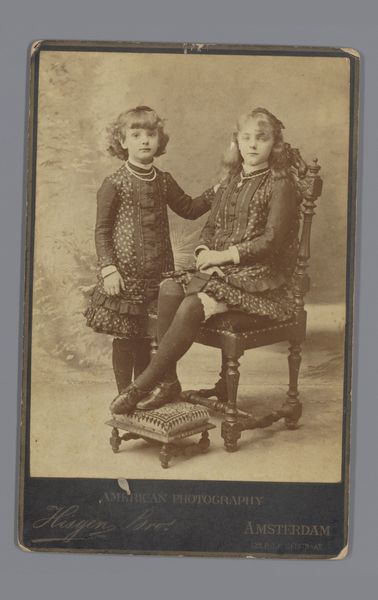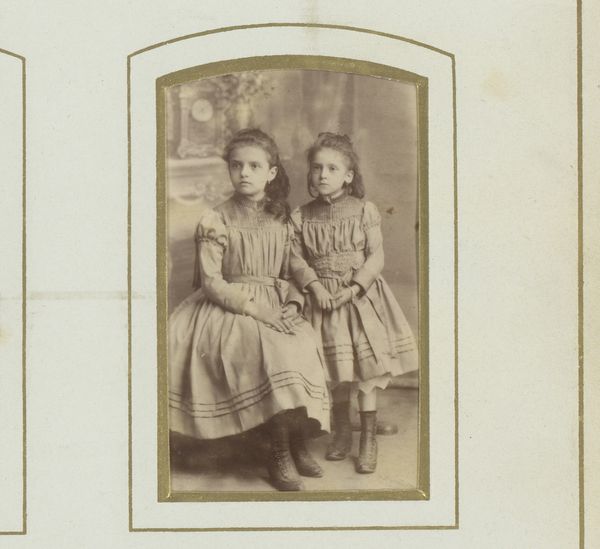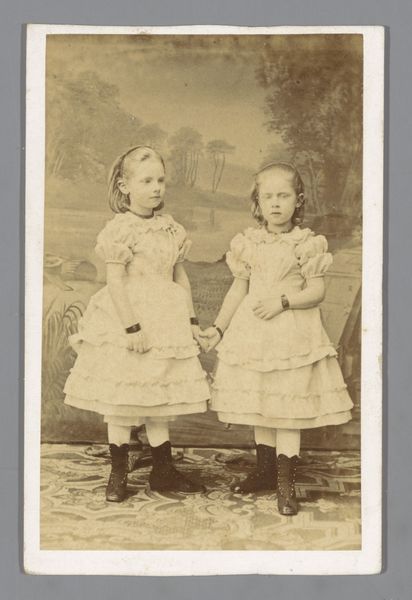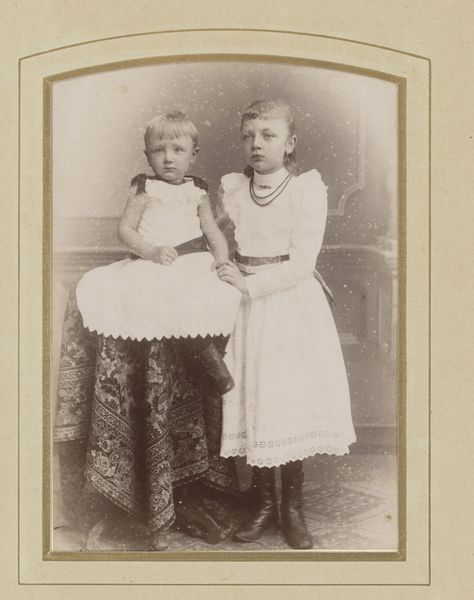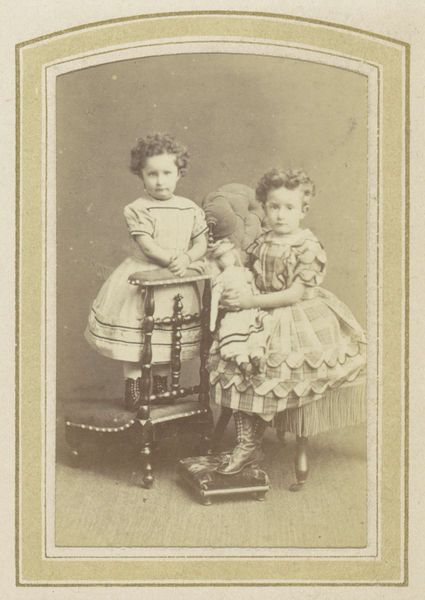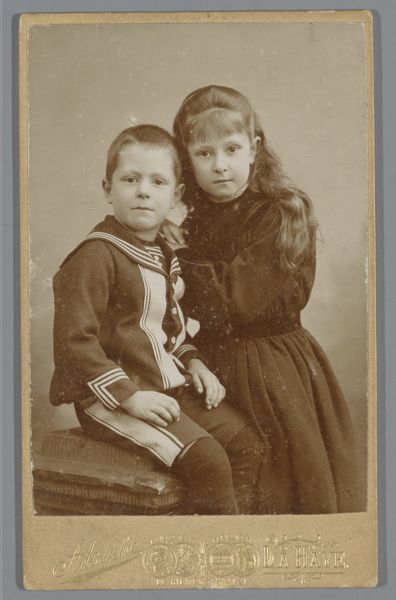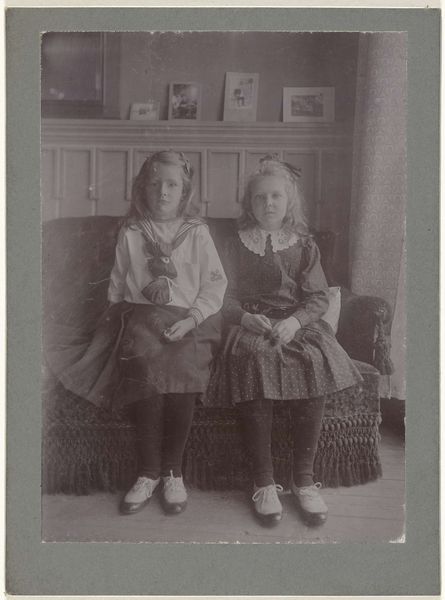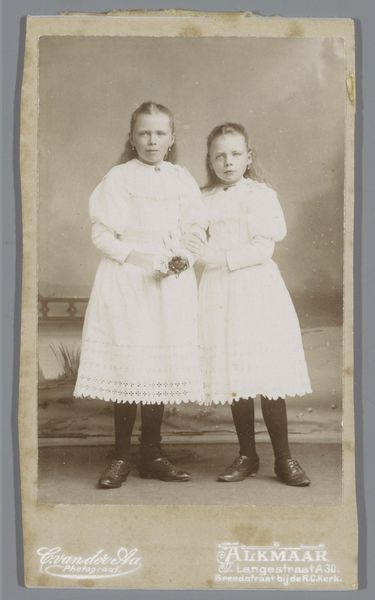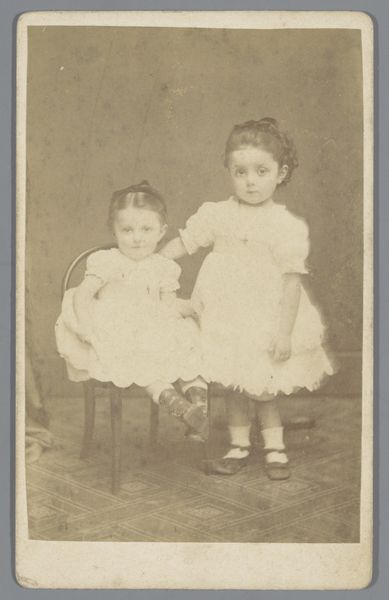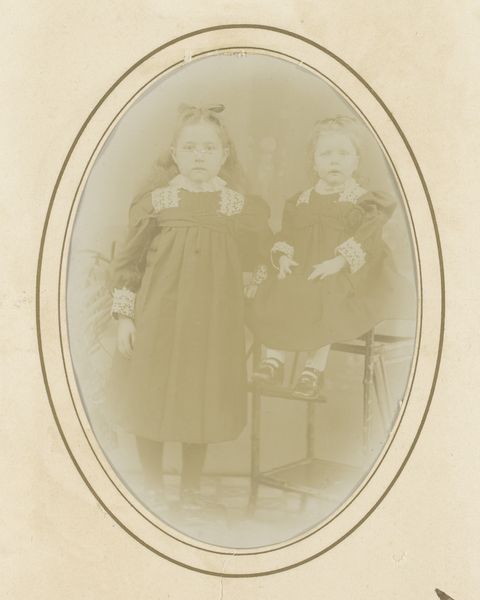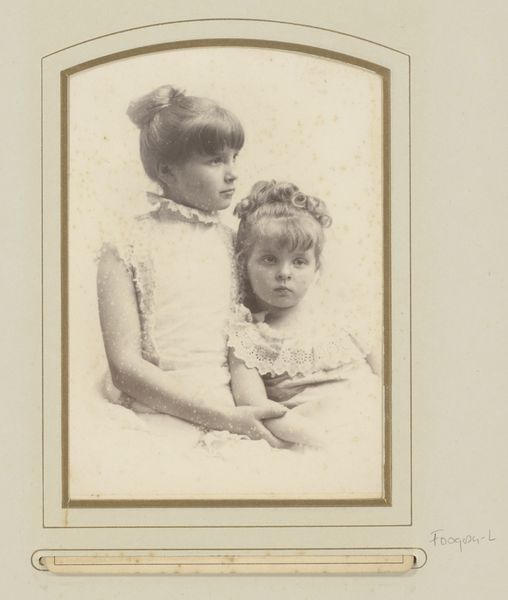
print, paper, photography, gelatin-silver-print
#
portrait
#
16_19th-century
# print
#
impressionism
#
paper
#
photography
#
gelatin-silver-print
Dimensions: 14.3 × 10 cm (image/paper); 16.5 × 10.8 cm (card)
Copyright: Public Domain
Editor: So this is "Untitled (Two Sisters)" taken by L.W. Felt, sometime between 1870 and 1890. It’s a gelatin silver print. It really captures this moment of almost staged, performative childhood. I’m interested in hearing your thoughts. How do you interpret this work? Curator: This image is a fascinating document of class and labor. Consider the dresses: Who made them? Were they purchased, or created by a seamstress? The labor involved in their crafting contrasts sharply with the seemingly leisurely existence these girls lead, a life documented and disseminated through the relatively new medium of photography. Editor: That's interesting! I hadn't considered the labor aspect so directly. The photograph itself as a commodity, too, right? Curator: Precisely. Photography democratized portraiture to some extent, yet access still hinged on financial means. What about the props - the rug, the furniture? They’re signifiers of a particular social standing, purchased and arranged to project an image of affluence and respectability. Editor: Right, it feels like everything is there to be consumed, even this vision of girlhood. What about the materials in the photographic process? How do they play into a reading? Curator: Absolutely. The gelatin silver print itself – consider the industrial processes necessary to produce the paper, the chemicals involved in development. These weren't materials readily available. Owning this object signaled participating in industrial and capital systems. This seemingly simple image then opens up a discussion around the socio-economic fabric of the time. Editor: So looking closer, it's not just a sentimental portrait but a study of production, labor and status, embedded in its materials and context. I wouldn't have noticed all of that without you! Curator: Art often holds a mirror to the social conditions that create it, if we choose to see the reflections. It encourages us to ask crucial questions about labor, material, and class, beyond just aesthetic judgement.
Comments
No comments
Be the first to comment and join the conversation on the ultimate creative platform.
